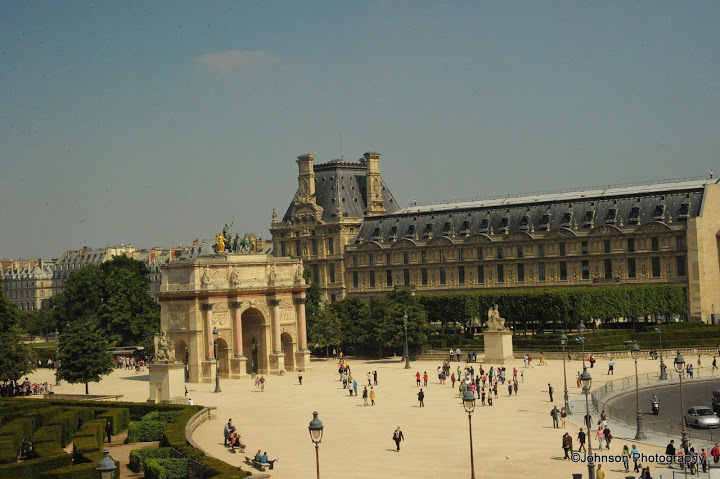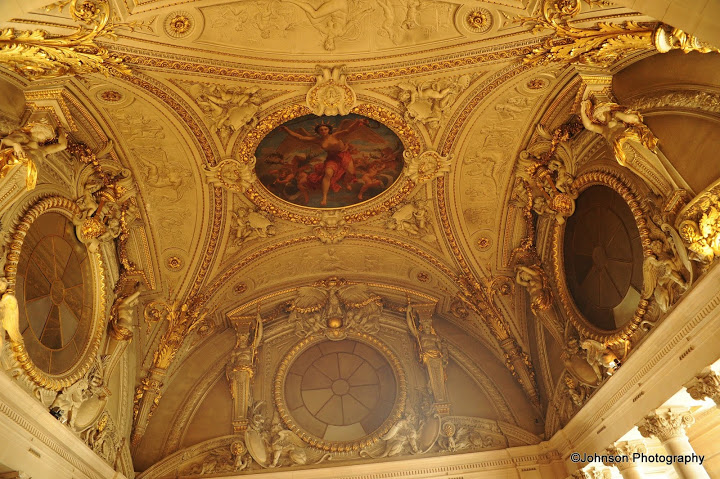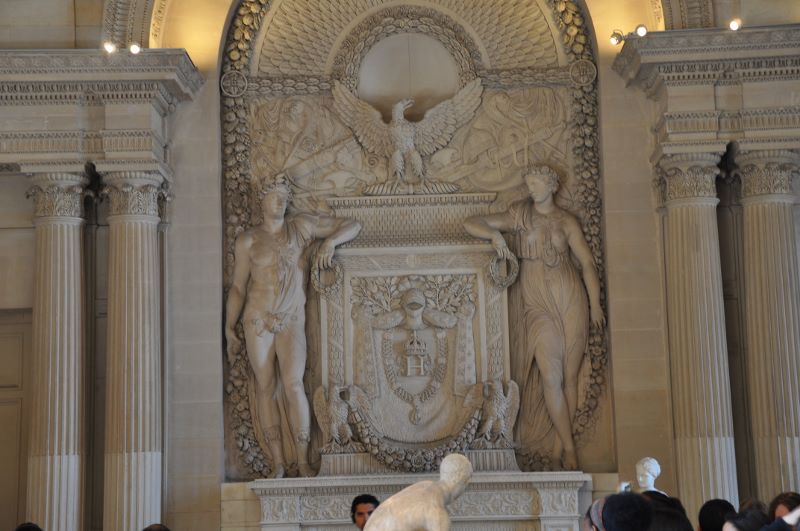The Louvre Museum (French: Musee du Louvre) is the worlds’ largest museum and a historic monument in Paris, France. Nearly 35,000 objects from prehistory to the 21st Century are exhibited over an area of 6,52,300 square feet. The Louvre is the world’s second most visited museum after the Palace Museum in China.
The museum is housed in the Louvre Palace, originally built as a fortress in the late 12th century under Philip II. Remnants for the fortress are visible in the basement of the museum. The building was extended many times to form the present Louvre Palace. In 1682, Louis XIV chose the Palace of Versailles for his household, leaving the Louvre primarily as place to display the royal collection, including a collection of ancient Greek and Roman sculpture. In 1692, the building was occupied by the royal Academy of Painting and Sculpture. During the French Revolution, the National Assembly decreed that the Louvre should be used as museum to display the nation’s masterpieces.
The museum opened on 10 August 1793 with an exhibition of 537 paintings, the majority of the works being royal and confiscated church property. Due to structural problems with the building, the museum was closed in 1796 until 1801. The collection was increased under Napoleon and the museum renamed the Musee Napoleon, but after Napoleon’s abdication many works seized by his armies were returned to their original owners. The collection was further increased during the reigns of Louis XVIII and Charles X and during the second French Empire the museum gained 20,000 pieces. Holdings have grown steadily through donations and bequests since the Third Republic. The collection is divided among eight curatorial departments – Egyptian Antiquities, Greek, Etruscan and Roman Antiquities, Islamic Art, Sculpture, Decorative Arts, Paintings and Prints and Drawings.
The Louvre Pyramid
The Louvre Pyramid (French: Pyramid du Louvre) is a large glass and metal pyramid designed by Chinese-American architect I.M. Pei, surrounded by three smaller pyramids, in the main courtyard of the Louvre Palace. The Pyramid is actually one of four, with two smaller one at its side and an “inverted” Pyramid that acts as skylight for the underground mall. The large pyramid serves as the main entrance to the Louver Museum. The pyramid is about 70 feet high and its base has sides 115 feet long. The building was commissioned by the then President of France Mr. Francois Mitterrand in 1984. It was one of the most controversial of President Mitterrand’s Grand Projects in Paris.
The construction of pyramid has triggered many controversies as the pyramid being an unsuitable symbol of death from ancient Egypt in the middle of Paris. It has been claimed by some that the glass panes in the Louvre Pyramid number 666, the number of the beast, often associated with Satan. Irrespective of all these controversies, on its completion in 1989 it has become a landmark of the city of Paris.

























The Mona Lisa
The most famous and much sought after exhibit in the Louvre Museum, without doubt is the “Mona Lisa”. You can see the visitors crowding around this portrait to photograph it. The Mona Lisa is a half-length portrait of a woman by the Italian artist Leonardo da Vinci which has been acclaimed as “the best known, the most visited, the most written about, the most sung about, the most parodied work of art in the world”.
Believed to be the portrait of Lisa Gherardini the wife of Francesco del Giocondo is in oil on a white Lombardy poplar panel and is believed to have been painted between 1503 and 1506. It was acquire by King Francis I of France and is now the property of the French Republic and is on permanent display at the Louvre Museum since 1797.
On April 6, 2005 following a period of curatorial maintenance, recording and analysis, the painting was moved to a new location within the museum’s Salle de Etats. It is displayed in a purpose-built climate-controlled enclosure behind a bulletproof glass. Since 2005 the painting has been illuminated by an LED lamp. About 6 million people view the painting at the Louvre each year.

The Winged Victory of Samothrace
The Winged Victory of Samothrace also called the Nike of Samothrace is a marble Hellenistic sculpture of the Greek goddess Nike (Victory), perhaps of the 2nd century BC. Since 1884, it has been prominently displayed the Louvre and is one of the most celebrated sculptures in the world. Historian H.W. Janson described it as “the greatest masterpiece of Hellenistic sculpture,” and it is one of a small number of major Hellenistic statues surviving in the original, rather than Roman copies.
Overall the work measures 18 feet in height. The statue made of white Paros marble, stands 9 feet tall including the wings. The base and the pedestal are sculptured from grey white-veined marble from the quarries of Lartos in the island of Rhodes. The statue consists of several blocks of marble, carved separately and then assembled.
It was created not only to honor the goddess, Nike but to honor a sea battle. It conveys a sense of action and triumph as well as portraying artful flowing drapery, as though the goddess was descending to alight upon the prow of a ship. It is considered as one of the Louvre’s greatest treasures, and since the late 19th century it has been displayed in the most dramatic fashion, at the head of the sweeping Daru staircase.




















































Truly wonderful! Thanks for sharing. This is one place we didn’t go to. Simply ran out of time!
LikeLike
Yes, that is the main problem. You need at least a day to have look at this vast collection of artefacts. We spent around 5 hours in there and I still feel I have not seen anything.
LikeLiked by 1 person
I can see that. All what you’ve taken requires more than a glance to appreciate the craft.
LikeLike